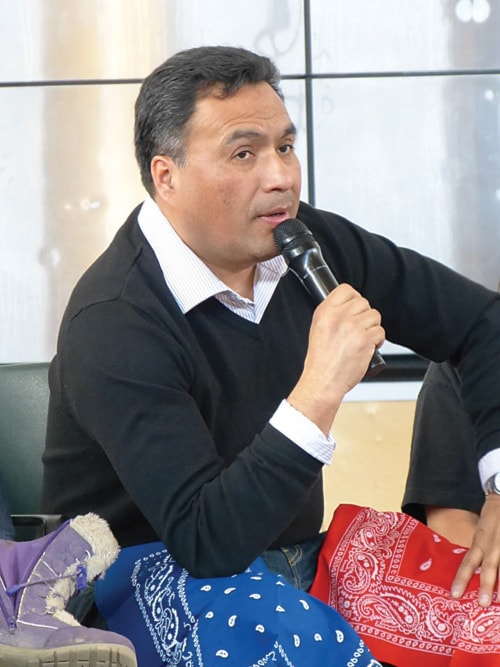While many students were kicking back taking it easy during spring break, there was a group at the Adams Lake Indian Band who participated in a Crime Prevention: Gang Awareness Program.
The two-day conference was attended by middle school-aged students upward including adults from surrounding areas. Reid Narcisse, Rebecca Jules, and Curtis Ahenakew were facilitators, with story telling by Lawrence Michel in between workshops.
Curtis Ahenakew was the facilitator Tuesday, March 20 at the ALIB gymnasium. Ahenakew is an actor/film producer from Vancouver, who has had personal experience through a daughter’s gang involvement. He said she is no longer a gang member but the brainwashing has not completely left her even after years on the outside.
Though Vancouver is the centre of gang activity in Canada, the network is vast with 130 known criminal gangs in B.C., 102 of which are youth gangs. In the last three years, there have been more than 100 murders linked to gangs and gang violence in B.C. Most gang members (60 per cent) are visible minorities.
“Even though our gun laws prohibit the sale of handguns, illegal weapons are coming over the U.S. border, purchased easily south of the border and smuggled north,” Ahenakew said. “These weapons are appearing all over Canada in our communities.”
He cited young people as the most targeted of the population by gang recruiters, more easily drawn in to the ‘thug life’ from a naive attraction to adventure and easy money selling drugs.
Poverty, a need for belonging and dysfunctional family dynamics can create the environment for vulnerability where gang recruiters will find likely candidates for crime involvement. One woman, whose identity cannot be revealed under victim protection, spoke of how the problem is real in our area. Her family had been moved out of the community to avoid further gang involvement.
Salmon Arm high school student Julianna Arnouse and conference participant remarked: “I want to learn so I can help free the community from gang activity.”
Ahenakew referenced information from a previous workshop he’d attended with Dr. Martin Broken-Leg. According to Broken-Leg, kids get into trouble between 3 and 6 p.m., usually when parents are working and there is no supervision.
He said children/youth will stay in school if there is one staff person in that school who makes them feel special, that they are wanted. It can be the teacher, lunch room monitor, librarian, principal. All it takes is for that one person to show an interest in them. Children have already decided subconsciously in Grade 7 whether they will stay in school and graduate, he said.
Conference organizers Andrea Stelter and Craig Duckchief were pleased with the successful event.
